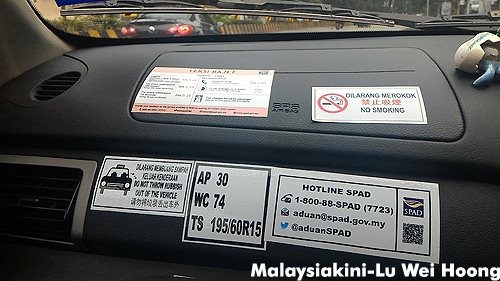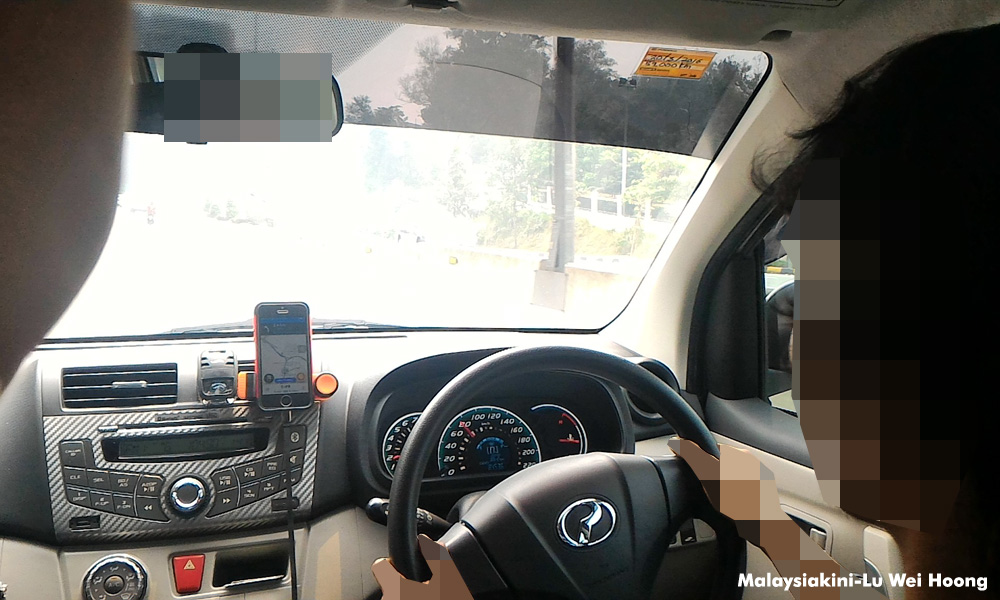FOCUS Recent violent images of attacks on Uber vehicles have brought to the fore a brewing discontent between taxi drivers and the increasingly popular mobile application (app) which matches willing drivers with anyone who needs a ride.
Taxi drivers have continuously cried that Uber is killing their livelihood but the message has barely resonated with consumers who see the mobile app as an alternative to conventional taxi drivers, infamous for their bad attitude, stinking cabs, and overcharging.
The more than 'a few bad apples' have contributed to the notoriety of Malaysian taxis but the advent of Uber has weighed on the entire industry, including regular taxi drivers who are only trying to support their family through an honest living.
In a four-part series, Malaysiakini dissects the Uber success story and puts the larger taxi industry under scrutiny.
We look at four key issues - how Uber drivers can earn more by doing the same thing regular cabbies do; what ails the taxi industry; Uber’s problems; and how to put an end to the taxi-Uber war.
In this first part, Malaysiakini follows two men - Adenan, 27, who found Uber so profitable that he left his job in robotics engineering; and R Kumar, 42, a taxi driver and a father of three who resents people like Adenan.
Adenan asked not to publish his real name, out of fear of retribution for being an Uber driver.
His fear is not unfounded, as evident in a few cases - including a video which went viral - where conventional taxi drivers take the law into their own hands in their aggression against Uber cars, drivers, and even riders.
 Adenan has even seen it firsthand. He related the dreadful afternoon on Oct 28 when he watched in horror as his customer is attacked by a taxi driver.
Adenan has even seen it firsthand. He related the dreadful afternoon on Oct 28 when he watched in horror as his customer is attacked by a taxi driver.
Adenan, in his black Myvi, had responded to a call through the Uber mobile app and was about to pick up the customer near a taxi stand at Tropicana City Mall in Petaling Jaya, Selangor.
"When the customer got into my car, a taxi driver opened my door and demanded to know if I was an Uber driver. Obviously I did not admit (to it) but the taxi driver insisted on checking my phone, (but) I refused (to comply).
"The customer was in a hurry, so he got down and wanted to call the security on the taxi driver; then a group of five or six taxi drivers attacked him," said Adenan.
Despite the risk, Adenan is quite satisfied with his new-found job as an Uber driver after quitting from his engineer position four months ago.
"As an engineer, I could only get about RM3,000 a month but now, I can earn between RM5,000 and RM6,000 as an Uber driver.
"It all depends on how hardworking you are. It's free and easy," he said, adding that his working hours remained the same - eight hours daily - but with higher returns.
Adenan even has surplus left to invest in a vape shop, compared to the past earnings as an engineer.
Falling fortunes for regular drivers
While people like Adenan have doubled their income with Uber, Kumar’s fate is the opposite.
His daily income as a taxi driver is almost halved - from RM250 to RM150 a day - despite working almost double the time, a backbreaking 14 hours a day.
From the earnings, he must pay around RM53 a day for the taxi licence and rental cost from a private company.
Before the rise of Uber, Kumar said he could fetch passengers from Kuala Lumpur to KLIA airport five times a week in his Proton Persona taxi.
 "Now it's difficult to even get one or two customers. They do not need us anymore," said a frustrated Kumar who blamed his falling fortunes on Uber and other mobile apps, such as GrabCar which was launched in May last year.
"Now it's difficult to even get one or two customers. They do not need us anymore," said a frustrated Kumar who blamed his falling fortunes on Uber and other mobile apps, such as GrabCar which was launched in May last year.
Kumar said he had contemplated abandoning his taxi job and jump onto the Uber bandwagon but decided against it, due to the uncertainties.
"If the government suddenly decides to ban Uber, then I will no longer have a taxi licence nor will I be able to drive for Uber," he lamented.
The government's position on Uber remains vague despite calls by many taxi drivers for the mobile app to be banned.
However, the Land Public Transport Commission, also known by its Malay acronym SPAD, on Monday said it was drafting proposals for changes in the law to help taxi drivers with the ‘best business model’.
For now, taxi drivers like Kumar can only resent Uber as they watch their income shrink.
Tomorrow, Malaysiakini will break down the numbers and show how taxi drivers are being exploited as a result of poor policies, making them uncompetitive against Uber drivers.
RELATED STORIES:
PART II: Sky-high fees doom cabbies to being Uber-losers
PART III: Change - is the taxi industry ready for Uberfication?
PART IV: Insurers: Private car insurance does not cover Uber drivers

